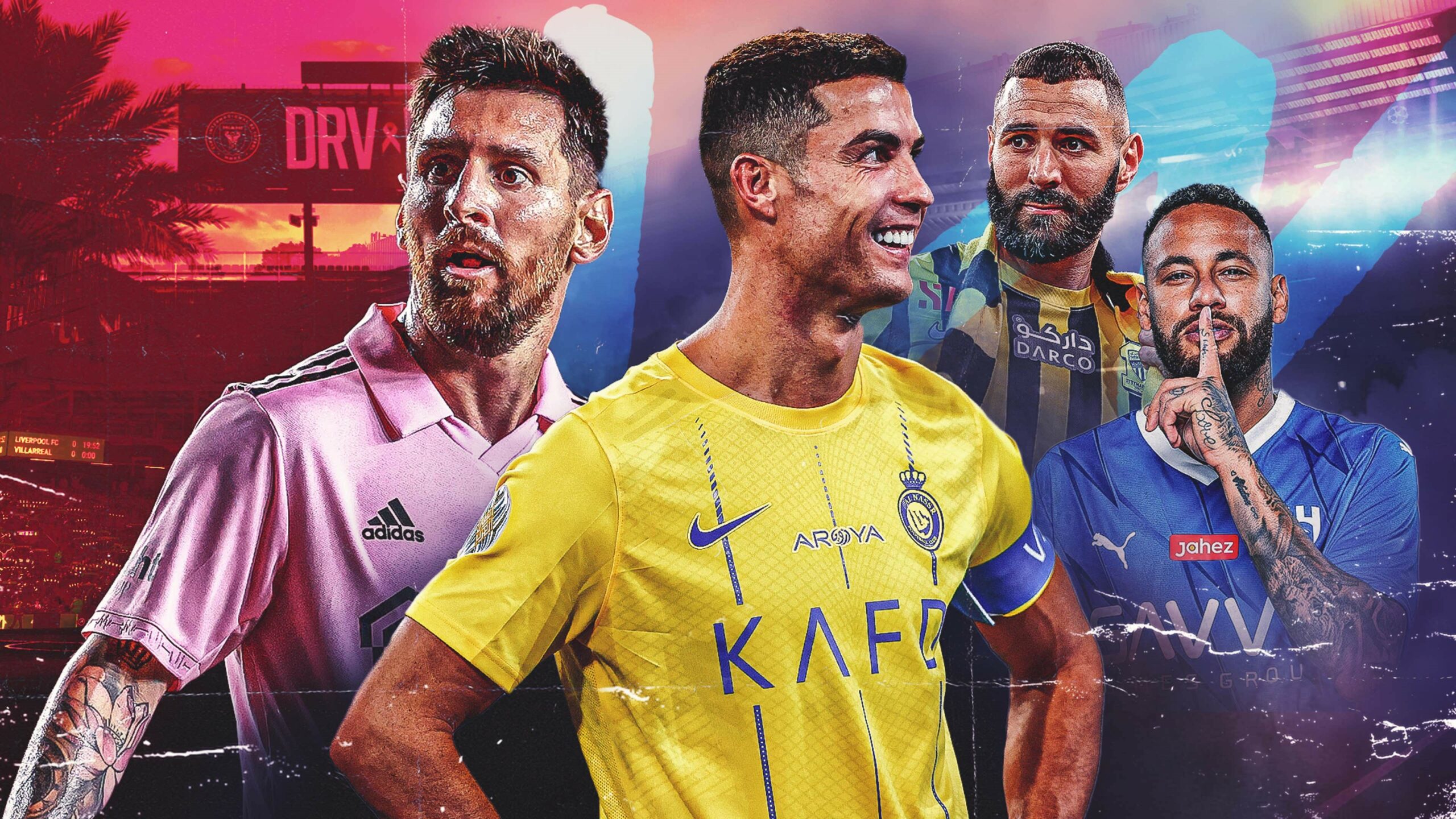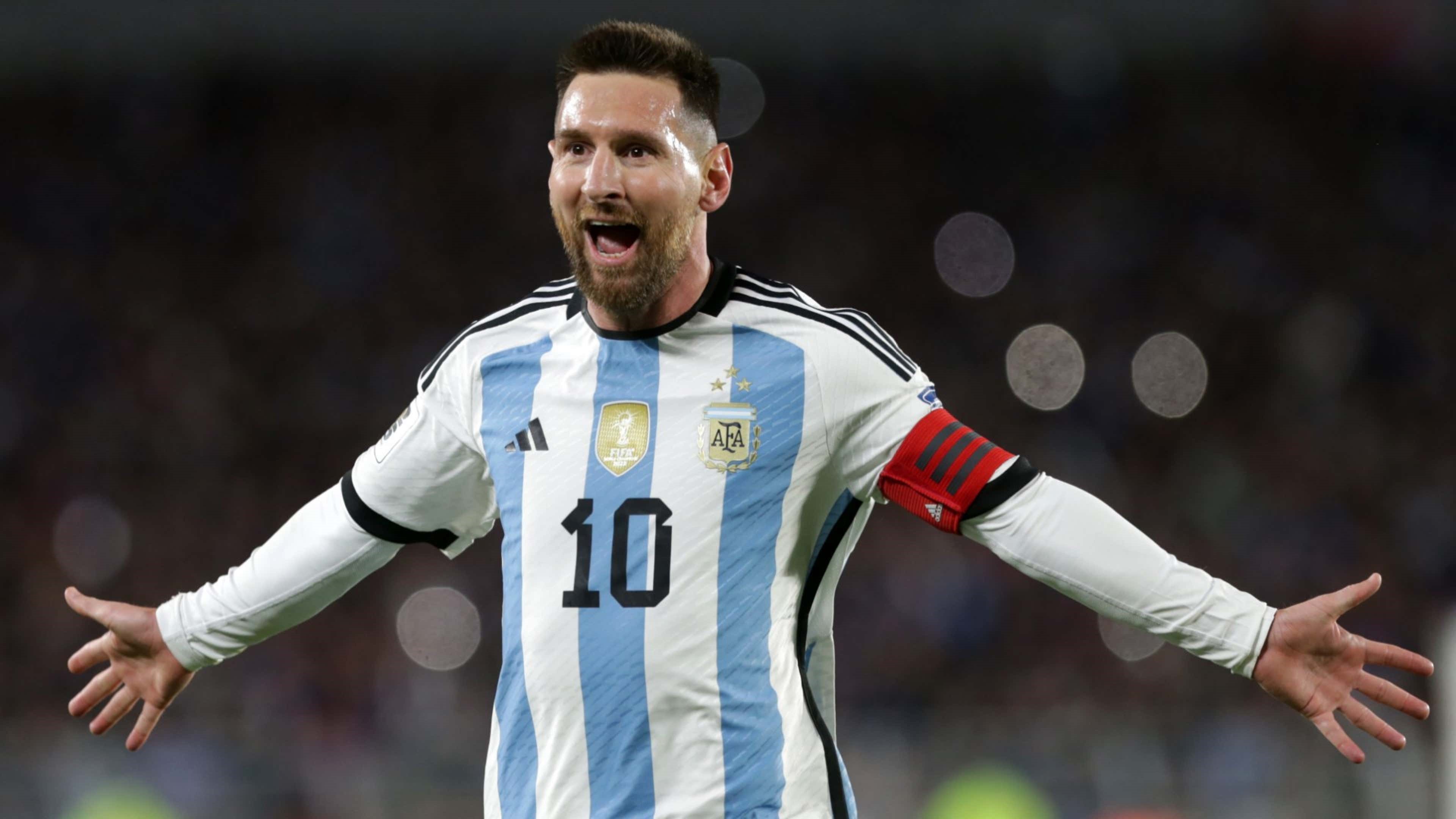It’s not Lionel Messi & MLS vs Cristiano Ronaldo & the Saudi Pro League: The GOATs are on the same side of this ‘war’ despite their new leagues’ differences

MLS and Saudi Arabia are two rising powers, both making moves that, at least in some way, has caused the powers in Europe to take notice. Both have picked up massive victories this summer and both are building major projects that have caught the public’s attention. More than ever before, the world is looking at these two leagues outside of Europe’s top-flights.
But, while fans love the idea of a rivalry between the two sides, the truth is that neither are really competing against one another. MLS and Saudi Arabia may have each signed their own version of the GOAT, but the way they do business outside of Messi and Ronaldo shows just how different the two leagues are approaching their own growth.
The GOATS arrive

Both leagues can look at the exact moment that the world took notice, and that moment was when their GOAT made the move.
For Saudi Arabia, that came back on the first day of 2023. It was on that day that Ronaldo, fresh off of the World Cup, made his move to Al-Nassr. The deal commanded Ronaldo the highest salary in history, worth a reported €200-million-per-year, plus millions more in bonuses, sponsorships and benefits. The deal was massive for the league, which had previously been home to several familiar faces, but clearly none at the level of Ronaldo.
MLS’ big move came during the summer, when Messi stunned the world by committing his future, and perhaps the final years of his career, to Inter Miami. A dream return to Barcelona proved impossible, pushing Messi to South Beach to become the face of MLS. In doing so, he became the biggest star to arrive in the U.S. since David Beckham, owner of Inter Miami and one of the many MLS executives that played their part in luring the Argentine to the league fresh off a World Cup win.
Messi, like Ronaldo, was promised a massive financial package, although nowhere near as big as the Portuguese star’s. Apple and adidas played their part, too, as the powers in charge moved heaven and earth to bring Messi aboard.
In that way, Messi and Ronaldo’s arrivals are similar: both were game-changing signings for each league, and both earned financial packages that, at one point, seemed almost impossible. However, the ways the leagues have built since shows their differences, as the Pro League continues to make the impossible a reality.
Saudi Arabia’s flood of stars

Neymar, fresh off his own unfathomably lucrative move to Al-Hilal, said it best: “I believe Cristiano Ronaldo started all of this and everybody called him ‘crazy,’ and this and that. Today, you see the league grow more and more.”
That’s an understatement. In addition to Ronaldo, Neymar – perhaps the third-biggest star in the world – also committed his future to the Saudi Pro League. Joining them are legendary figures like Karim Benzema, N’Golo Kante and Sadio Mane, as well as in-their-prime stars such as Ruben Neves, Aleskandar Mitrovic, Yassine Bounou, Allan Saint-Maximin, Sergej Milinkovic-Savic and Seko Fofana.
All of the above were playing at top-level clubs, and all were drawn to Saudi Arabia by the massive amounts of cash being thrown around by the clubs in that league.
Ronaldo’s arrival wasn’t an aberration, but rather the start of a trend. The floodgates have opened, with Saudi clubs spending hundreds of millions of dollars to sign several of the world’s top players. The league has gone from zero to 100, with several of the top teams now stacked better than some in Europe’s top competitions.
There’s one big question, though: is it sustainable? Millions and billions of dollars of investment from the country’s Public Investment Fund mean it might just be, but, at some point, the league will have to turn a profit, right? Are the stars that have been brought in enough to draw the TV money to break even? And even if that money never comes, does it even matter to a country and league with seemingly-endless finances?
We’ll find those answers out in the coming years as we see whether or not their bubble bursts in the same way that the Chinese Super League did. But for now, it’s safe to say that the Saudi Pro League is going all in on trying to build something as quickly and as ambitiously as possible.
MLS’ steady build

MLS is no stranger to star power, of course. Beckham, Zlatan Ibrahimovic, Thierry Henry, Steven Gerrard, Andrea Pirlo and Didier Drogba all walked so that Messi could run, in a way. The league, more than many others, has pushed to sign Europe’s icons at the tail-end of their career.
It was those pursuits that earned MLS the ‘retirement league’ label and, for some time, it was pretty accurate. However, if you’ve been paying attention to the league throughout the last decade, that label has largely disappeared as MLS has evolved into a talent developer.
Over the last few years, MLS has commanded massive transfer fees for young stars such as Alphonso Davies, Miguel Almiron, Tyler Adams, Ricardo Pepi, Gaga Slonina, Jhon Duran, Taty Castellanos and Brenden Aaronson. Rising stars like Thiago Almada and Djordje Petrovic will be joining that list very, very soon. MLS’ business model has pivoted younger, with teams now all on the hunt for the next star they can develop and sell to Europe’s best.
Some teams, like LAFC, the LA Galaxy and Inter Miami, of course, play in a different tax bracket than others. And that is certainly evidenced by Miami’s signings of Sergio Busquets and Jordi Alba to play alongside their old running mate in Messi. But one glimpse at Miami’s line-ups illustrates the league’s evolution.
Young South American stars like Facundo Farias, Tomas Aviles, Leonardo Campana and Diego Gomez play alongside American-developed players Drake Callender, Benjamin Cremaschi and David Ruiz. Some of those young stars could become the next Almiron or Davies when the time comes, earning Miami a massive fee for a player they helped develop.
That shows the big difference between the Saudi league and MLS. When Ronaldo arrived in Saudi Arabia, the league used it as an opportunity to lure more big stars. When Messi arrived in MLS, you saw Inter Miami fill out their XI with a few older faces, yes, but also some younger newcomers that could learn and develop alongside the Argentine.
So which approach is best? Well, the answer may be a bit of both.
What Saudi Arabia can learn from MLS
We’ll begin this with a caveat – we haven’t quite seen Messi’s impact just yet. Ronaldo’s came one transfer window after his arrival, as his winter move set the tone for this summer’s flurry of transfers. Much can change in the winter or perhaps next summer once the world market has adjusted to Messi and Ronaldo’s new homes.
However, as we look at where the leagues are in the here and now, it’s clear that both still have growing to do, and both could look to the other to figure out how to do it.
For teams in Saudi Arabia, the key to their footballing rise will be to take advantage of all of this hype to not just draw new stars, but develop them. Having players like Ronaldo, Neymar and Benzema will obviously raise the level, and a rising tide lifts all boats, but over the next few years, the league will have to invest more in talent development.
It’s something American and Canadian soccer have done massively over the last decade or so. It’s not perfect by any stretch, as the American youth system is still the wild, wild west compared to the rest of the world, but the growth of the U.S. men’s national team and Canada’s men’s national team show how far both countries have come. Players are getting better and taking the big leaps younger than ever before.
That will be massive for Saudi Arabia, should it ever happen. The country’s national team is, of course, pretty good as well, having appeared at the last two World Cups while being able to boast that they were the only team to beat eventual winners Argentina in 2022. As things stand, every single member of their national team plays in the Pro League. Can the league develop players of the ability to rival those in Europe? We’ll find out in the next decade.
What MLS can learn from Saudi Arabia
It’s safe to say that Inter Miami has captured the attention of the world. Much like Ronaldo’s games at Al-Nassr, Messi’s matches with Inter Miami have become must-watch affairs. The club has instantly become one of the most-talked about in the world thanks to Messi’s heroics.
So how does MLS as a whole build off of one team and one player’s success? Well, they’ll have to take the training wheels off. MLS is a league that is still governed by a salary cap, and that isn’t going to change. It’s a feature of American sports and promotes parity, one of the things that truly sets MLS apart from every other league in the world. There is no Bayern Munich or Paris Saint-Germain in MLS because the salary cap is the great equalizer.
However, while the salary cap won’t leave, it can, should and probably will be adjusted. Inter Miami owner Jorge Mas said as much after his side completed the signing of the century in Messi.
“I found the energy in the room today infectious,” Mas said following a meeting with fellow MLS owners. “All of us understand the opportunity ahead of us, the opportunity to continue growing the league. Hopefully this is a catalyst for the hypergrowth that I and all of us aspire to.”
“Evolution is inevitable and change is likely,” Mas added. “We all want this to be an elite league, we all want it to grow.”
For MLS to truly capture this Messi-led moment, the league needs to step up and make the big moves that Saudi Arabia has quickly grown famous for. For years, MLS has taken the slow and steady route, but that game plan has to be altered now that Messi’s there. There will be more players than ever before pushing to come to MLS, and teams cannot be required to turn elite talents down just to comply with a salary cap that, at the moment, is far too restricting.
Antoine Griezmann and Luis Suarez are two players that seemingly want to move to MLS, and there are undoubtedly more on the way. Signing young South American stars is great and developing American talent is important, but MLS won’t take the next step until it signs truly elite players at a point in their career when they still have something to give.
The Messi effect will take come over the next few years, but we’ll have to see how big that effect is.
Where do we go from here?
They key to all of this for both sides is sustainability. For MLS, what happens when Messi’s shine wears off? For Saudi Arabia, how do you build on the bedrock of stars that are now in place?
The answers to those questions will determine each league’s place in the world hierarchy over the next decade or so. Global soccer is changing as money continues to push the sport further away from what was. Several of the world’s top leagues are struggling, with the Saudi Arabian league proving this summer that several are ripe for the picking, but what will it take for a league outside of Europe to truly threaten the elite?
It’ll take a lot, to be fair. It will take years and years of sustained investment and interest. It’ll take a combination of star-power, business savvy and luck that may almost be impossible. Both leagues are chasing a structure that has existed for over a century, and making up 100 years of history can’t be done with one or two signings.
Can MLS and/or Saudi Arabia catch the Premier League? Almost certainly not. Can they catch the Bundesliga or Serie A or Ligue 1? Probably not as well and, if they do, it’ll take a while. There are certain things that money can’t buy and certain things that have to be earned and built through something sustainable.
Both leagues now find themselves on a similar path, although with a very different approaches towards navigating it. Both have aims of challenging the status quo, of building something different and sustainable and unheard of outside of European shores.
Can either succeed? We’ll find out eventually. Messi and Ronaldo are the first major steps, the initial warning shots. The battle between MLS and Saudi Arabia may not exist, but their fight to find their place among the best is only just beginning.




